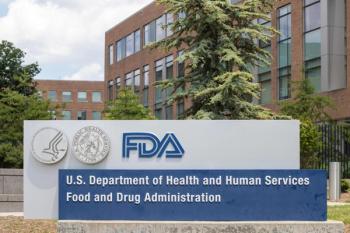
Study highlights variable efficacy of aspirin dosing during pregnancy
A recent study reveals that pregnancy-specific factors influence aspirin pharmacokinetics and pharmacodynamics, suggesting the need for tailored aspirin dosing to optimize outcomes in preventing preeclampsia.
Administration of a single dose of aspirin during pregnancy is associated with plasma concentrations of salicylic acid, thromboxane suppression, and platelet inhibition, according to a recent study published in the American Journal of Obstetrics & Gynecology.
Preeclampsia is reported in up to 30% of patients despite aspirin use. While current guidelines recommended an 81 mg dose of aspirin, recent data has indicated dose-dependent efficacy. Therefore, it is necessary to understand the pharmacokinetics (PK) of aspiring dosing in pregnancy.
PK are influenced by factors affecting drug absorption and drug clearance and may be impacted by pregnancy-specific changes in multiple factors. Further information may be obtained by studying the pharmacodynamics (PD) of aspirin.
Investigators conducted a study to describe the PK and PD of aspirin through pregnancy.Participants included women with singleton pregnancy at high risk of preeclampsia. Those with thrombocytopenia, aspirin use in pregnancy before enrollment, thrombophilia or bleeding diathesis, anticoagulant therapy, or contraindications to aspirin were excluded.
Daily 81 mg aspirin was recommended to participants as standard-of-care. Study visits included a baseline visit during the first trimester, the first follow-up at 2 to 4 weeks after treatment initiation, and a second follow-up during the third trimester.
Weight and body mass index (BMI), platelet function analysis-100 (PFA-100), urinary thromboxane B2 (TXB2), serum TXB2, and plasma salicylic acid were evaluated at each visit. Adherence was also assessed, with adherence of at least 75% defined as adequate.
Blood work at baseline and plasma blood level of salicylic acid at 30 minutes then hourly 1 to 6 hours after aspirin administration were evaluated to determine PK. PK assessment was performed with a lower limit of detection of 50 ng/mL and quantification of 100 ng/mL.
Aspirin PD assessments occurred at both follow-up visits. Pharmacodynamic endpoints included thromboxane in serum and urine and platelet inhibition.
First-trimester data was obtained from 19 participants and third-trimester data from 16. Only 1 participant had adherence below 75% during the first trimester, and adherence at the second follow-up ranged from 92% to 100%.
Mean pharmacokinetic values did not significantly change between the first and third trimester, but lower peak concentration (Cmax) was reported in the third trimester vs the first. An inverse association was found for current BMI as a continuous measure and baseline obesity as a binary variable with log-adjusted Cmax.
Urinary thromboxane was significantly reduced at the first follow-up visit when compared to baseline, with these changes decreasing in the third trimester. Mean serum thromboxane also decreased following aspirin use, but these reductions were not statistically significant and had significant variations.
PFA-100 epi closure time of at least 150 seconds was reported in only 8 of 19 participants. In the first trimester, plasma salicylic acid Cmax was associated with urinary thromboxane suppression, but not in the third trimester. However, plasma salicylic acid exposure remained significantly linked to urinary thromboxane suppression in multivariable regression analysis.
A link was also reported between plasma salicylic acid and PFA-100, and urinary thromboxane and PFA-100 were significantly linked to progressive thromboxane suppression and platelet inhibition in the second and third trimester. Urine TXB2 was also strongly linked to PFA-100.
These results showed the link of a single aspirin dose during pregnancy with plasma concentrations of salicylic acid, thromboxane suppression, and platelet inhibition. Investigators recommended dose modification of aspirin in pregnancy to achieve the optimal response.
Reference
Boelig RC, Kaushal G, Rochani A, McKenzie SE, Kraft WK. Aspirin pharmacokinetics and pharmacodynamics through gestation. American Journal of Obstetrics & Gynecology. 2024;231(3):344.E1-344.E16. doi:10.1016/j.ajog.2023.12.028
Newsletter
Get the latest clinical updates, case studies, and expert commentary in obstetric and gynecologic care. Sign up now to stay informed.









